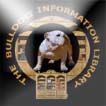Schutzhund : Theory and Training Methods
by Susan Barwig (Author), Stewart Hilliard(Author)
Hardcover: 256 pages
Publisher: Howell Book House; (February 20, 1991)
Advanced Schutzhund
by Ivan Balabanov (Author), Karen Duet (Author)
Hardcover: 256 pages
Howell Book House; (June 15, 1999)
Top Working Dogs:
A Training Manual--Tracking, Obedience, Protection
by Dietmar Schellenberg. Paperback: 208 pgs.
Publisher: Dog Behavior Consultants; 3rd ed. (Jan 1, 1994)
Training Dogs, A Manual
by Konrad Most
Paperback: 204 pgs. Publisher: Dogwise Publishing; Reprint ed. (May 1, 2000)
.
.
.




